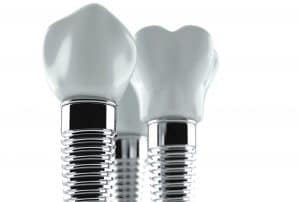 Losing one or more teeth isn’t as easy to overcome as a cavity or a mild case of gum disease. For example, in addition to addressing the loss of the tooth, you may also need treatment to address the underlying cause of it. Also, tooth loss can have several long-term consequences that you may not be aware of, and your tooth replacement should do all it can to prevent them. Today, we look at how dental implants are designed to do this more effectively, and what makes them different from more conventional types of replacement teeth.
Losing one or more teeth isn’t as easy to overcome as a cavity or a mild case of gum disease. For example, in addition to addressing the loss of the tooth, you may also need treatment to address the underlying cause of it. Also, tooth loss can have several long-term consequences that you may not be aware of, and your tooth replacement should do all it can to prevent them. Today, we look at how dental implants are designed to do this more effectively, and what makes them different from more conventional types of replacement teeth.
What’s underneath your restoration
A dental implant restoration comes in three distinct parts – the post (or posts) inserted into your jawbone, abutments for each post, and a custom restoration secured to the abutments. The dental implant posts and abutments are the key differences between an implant restoration and a traditional one. Each post is designed to mimic a healthy, natural tooth root, offering much more secure and comfortable support for your restoration than traditional methods (such as clasps or adhesives). Because of this, your restoration can more successfully mimic the healthy, natural structures of your teeth and offer a more lifelike restoration to rebuild your smile.
What dental implants make easier
Supporting a custom restoration on an appropriate number of dental implants makes restoring and preserving your smile easier in several ways. The most notable involves the support that they provide your dental crown, bridge, or denture as you bite, chew, speak, smile, and more. By being anchored in place with a dental implant, your restoration can absorb your bite’s pressure more effectively, without shifting or becoming damaged, which allows it to function more like your natural teeth.
What they do for your smile long-term
With the help of root-like posts, a modern dental restoration doesn’t just mimic a healthy, natural tooth’s structure. It also reestablishes much more of the tooth’s function. Your healthy teeth roots are essential parts of your teeth, but the support they provide as you bite and chew is only part of their purpose. The pressure from biting and chewing causes your teeth roots to stimulate your jawbone, which is the signal your body needs to send it enough minerals and nutrients to support your jaw and teeth. Reestablishing this stimulation with the help of dental implants is one of the only ways to help preserve your jawbone’s strength and integrity following the loss of one or more teeth roots.
Learn about the difference dental implants make
When it comes to restoring your smile by replacing lost teeth, dental implants can make all the difference in how your restoration looks, feels, and functions. To learn more, schedule a consultation by calling the Dental Centre of Conroe in Conroe, TX, today at (936) 441-4600.




